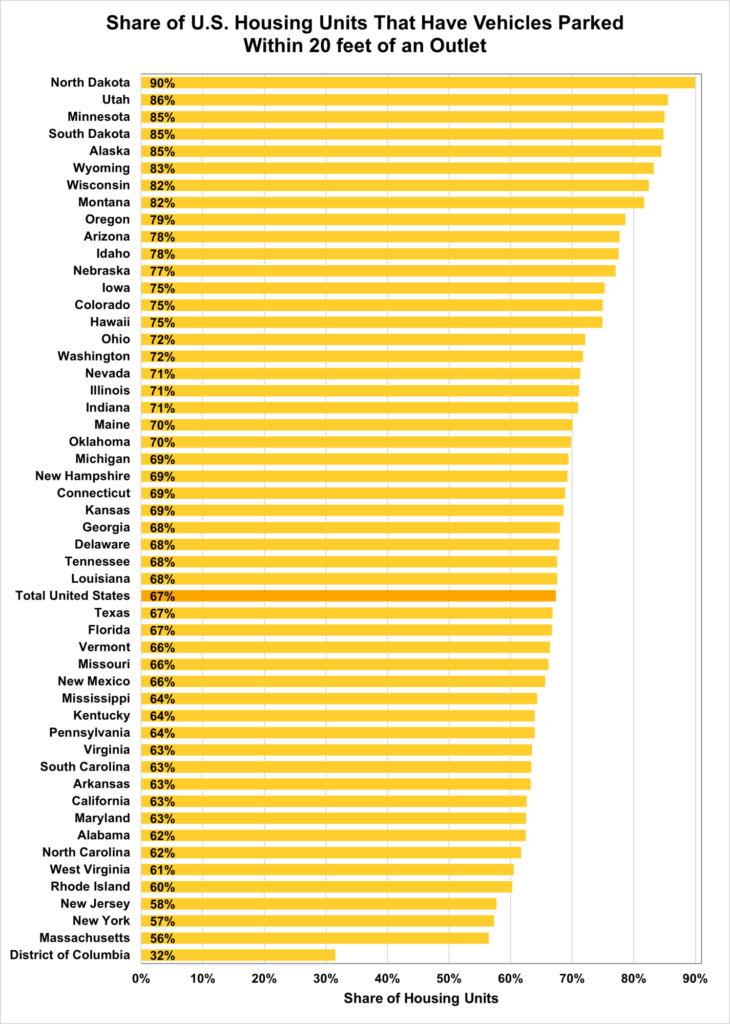
In the ever-evolving landscape of sustainable transportation, the transition to electric vehicles (EVs) stands as a pivotal milestone. At the heart of this shift lies the critical issue of accessible at-home charging. According to the 2020 Residential Energy Consumption Survey, an encouraging 67% of all housing units in the United States have vehicle parking within 20 feet of an electrical outlet. This statistic holds substantial implications for the widespread adoption of EVs, as it addresses a key concern for potential EV owners.
The proximity of vehicle parking to an electrical outlet plays a crucial role in the feasibility of at-home charging. A distance of 20 feet is well within the operational range of many standard EV charging cords, ensuring that a substantial majority of American households are already equipped for seamless charging experiences. This accessibility eliminates a significant barrier to entry for those considering the switch to electric vehicles.
The study also sheds light on regional disparities in residential charging accessibility. The District of Columbia reported the lowest percentage of housing units with outlets within 20 feet of vehicle parking, standing at 32%. In contrast, North Dakota emerges as a beacon of progress, with an impressive 90% of housing units meeting this criterion. These findings underscore the importance of targeted efforts to improve charging infrastructure in regions that currently lag behind.
As the nation grapples with the imperative to reduce carbon emissions and combat climate change, policies aimed at bolstering residential charging accessibility are more critical than ever. Incentives for homeowners to install EV charging stations and grants for local municipalities to expand charging infrastructure can accelerate the transition towards sustainable transportation.
